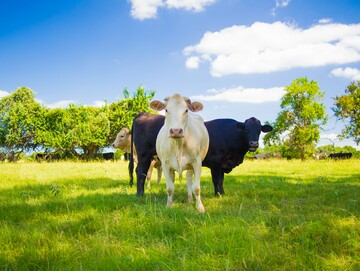What are biotic factors?

Biotic factors are living components of an ecosystem, such as plants, animals, and bacteria.

Biotic factors are living components of an ecosystem, such as plants, animals, and bacteria.
Biotic factors are living things that make up an ecosystem. They can be animals, plants, fungi, bacteria, or even tiny organisms that you can't see with your naked eye.
Here are some examples of biotic factors:
- Plants: Trees, flowers, grass, algae
- Animals: Birds, fish, insects, mammals, humans
- Fungi: Mushrooms, molds, yeast
- Bacteria: E. coli, streptococcus, salmonella
Biotic factors interact with each other in many ways. Here are a few examples:
- Predation: Animals eat other animals for food. For example, a lion might eat a zebra.
- Competition: Animals compete for resources, such as food, water, and space. For example, two squirrels might compete for the same nut.
- Mutualism: Two organisms benefit from each other. For example, a flower benefits from a bee because the bee helps to pollinate the flower, and the bee benefits from the flower because it gets nectar to eat.
- Parasitism: One organism benefits from another organism, while the other organism is harmed. For example, there are some special flowers called 'tricky orchids.' These flowers cannot make their own food like most plants do. Instead, they need help from tiny fungi friends in the soil. When the tricky orchid seeds land on the ground, they ask the fungi for a little help. The fungi share yummy food they get from the trees, but they don't recive anything back in return.
Biotic factors are an important part of ecosystems. They interact with each other in many ways, and these interactions help to keep ecosystems healthy.
What are abiotic factors?
Abiotic factors are non-living things that are a part of an ecosystem. They include things like sunlight, air, water, temperature, and soil. These things are very important for living things to survive in an ecosystem. For example, plants need sunlight to make food through a process called photosynthesis, and animals need air to breathe.
What are some of the factors that contribute to biodiversity?
Biodiversity means having many different types of living things in an ecosystem. There are several factors that contribute to biodiversity. One example is habitat diversity, which means having different places to live in an ecosystem. Imagine a forest with tall trees, a river, a meadow, and a pond. All these different habitats provide homes for different plants and animals, making the ecosystem more biodiverse.
Another factor is food availability. Different plants and animals have different food preferences. Some animals eat plants, while others eat other animals. When there is a variety of food sources available, more species can survive and thrive.
Climate is also an important factor. Different organisms have different tolerances for temperature and rainfall. Some need hot weather, while others prefer a colder climate. Having a range of different climates in an ecosystem allows for a greater variety of species to live there.
Lastly, human actions can also impact biodiversity. Building cities, cutting down trees, and polluting the environment can harm the biodiversity of an ecosystem. On the other hand, protecting habitats, planting trees, and conserving resources can help preserve biodiversity.
Overall, a combination of factors like habitat diversity, food availability, climate, and human actions can contribute to the richness and variety of living things in an ecosystem, making it more biodiverse.

Biotic factors are living components of an ecosystem, such as plants, animals, and bacteria.